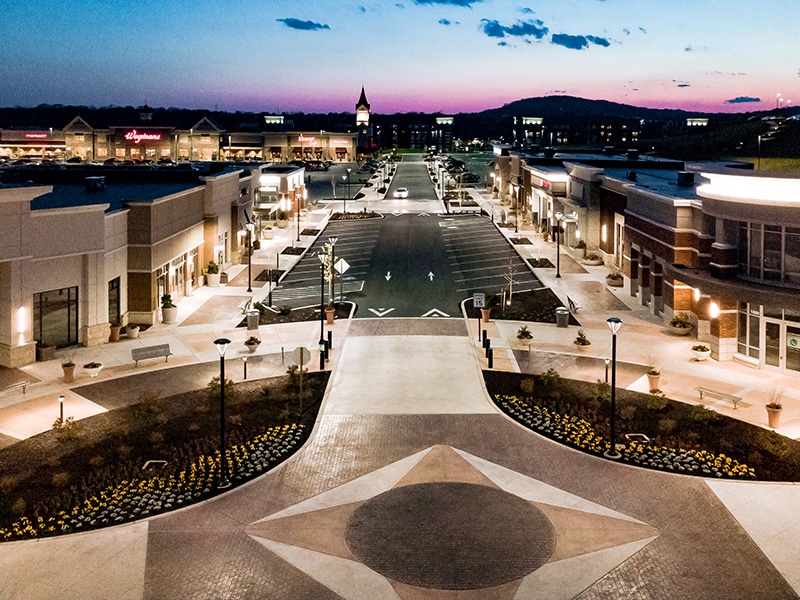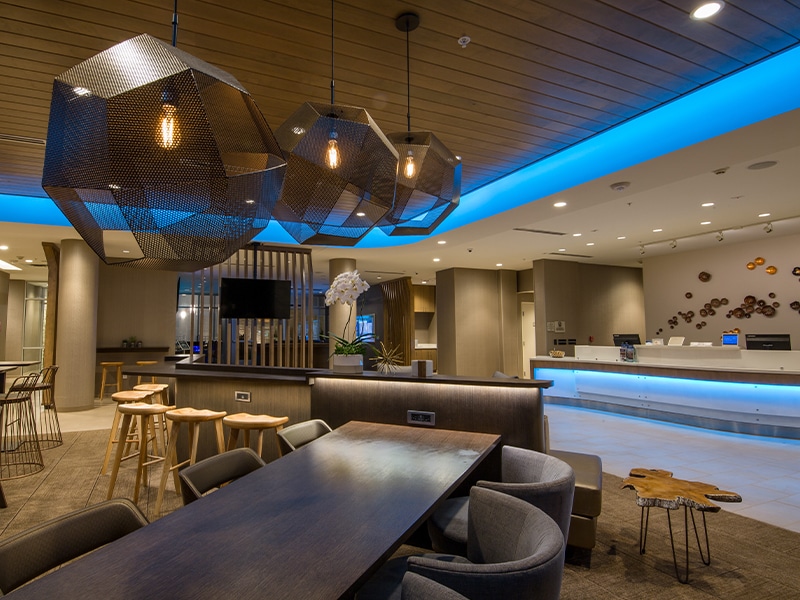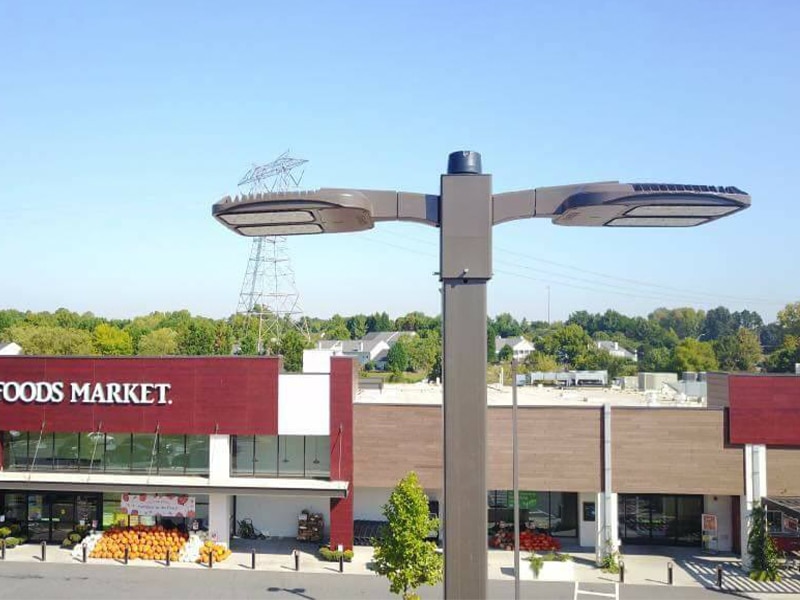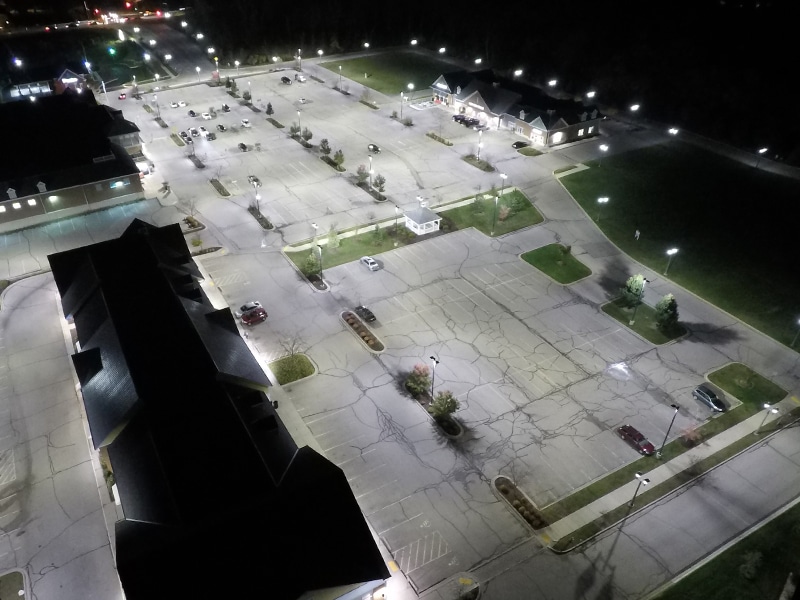FAQ
WLS Lighting – Frequently Asked Questions
Maintenance & Safety
How often should light poles be inspected?
At minimum, light poles should be visually inspected once a year. For high-traffic commercial sites, inspections every 6–12 months are best practice, with ultrasonic or stress testing every 3–5 years. Poles in coastal or high-risk areas may need more frequent checks. WLS’s Monthly Maintenance Program (MMP) includes proactive outage audits to catch issues before failure.
What are the risks of not testing lighting infrastructure?
Failing to inspect lighting can lead to catastrophic pole failure, electrical hazards, higher repair costs, liability exposure, and insurance complications. Regular inspections protect people, property, and budgets.
What are signs of lighting system failure?
Warning signs include flickering, persistent outages, rust or corrosion at the base, leaning poles, buzzing ballasts, and fixture discoloration. WLS identifies these issues during outage audits.
What is ultrasonic pole testing?
Ultrasonic testing is a non-destructive method to detect internal corrosion or thinning in steel/aluminum poles. It ensures safety by identifying risks before visible damage occurs.
Cost & Energy
How much does commercial lighting cost to maintain?
Legacy HID systems cost $250–$500 per fixture per year, while LED systems cost just $30–$80. Pole or wiring repairs can run $500–$2,000 if not caught early. WLS’s MMP reduces costs by bundling proactive service and volume rates.
How can I reduce lighting costs in a shopping center?
Switch to LED, add smart controls like WLS NetLiNK, enroll in a monthly maintenance program, optimize photocells/timeclocks, and bundle sites for rebates and volume pricing.
Are LED retrofits worth it?
Yes. LEDs reduce energy use by up to 80%, last 5–10 years, improve visibility, qualify for rebates, and typically pay back in 1.5–3 years. They are a long-term asset protection strategy.
What rebates are available for businesses?
Utilities, manufacturers, and federal programs offer rebates for LED upgrades, controls, and smart systems. WLS researches, documents, and applies for rebates—often worth $10K–$100K+ per project.
Decision Making & Selection
What’s the best lighting for large parking lots?
LED area lights on 25–40 ft poles. Type V optics for center poles, Type III/IV for perimeter. 4000–5000K color temperature, 10–20 foot-candle average, and fixtures with DLC Premium listing are recommended.
How do I choose lighting for a retail property?
Focus on visibility, aesthetics, and efficiency. Use LED pole lights for parking, wall packs at entrances, under-canopy fixtures for storefronts, and smart controls for efficiency.
What’s the difference between smart and traditional lighting?
Smart systems (like NetLiNK) enable monitoring, auto alerts, dimming, and energy tracking. Traditional systems rely on fixed schedules with no feedback. Smart lighting provides faster ROI for multi-site portfolios.
Sustainability & ESG
How does lighting affect ESG reporting?
Lighting upgrades reduce Scope 2 emissions, improve site safety, and create audit trails for governance. They deliver measurable improvements for GRESB, CDP, and TCFD disclosures.
What qualifies as sustainable lighting?
High-efficacy fixtures (130+ lm/W), 50,000+ hour lifespans, DLC Premium/Energy Star listing, smart dimming controls, recyclable materials, and designs that eliminate overlighting.
Compliance & Liability
Are there commercial lighting compliance laws?
Yes. Standards include IECC, ASHRAE 90.1, Title 24 (California), and local codes on glare, dark-sky, and trespass. Compliance is required during permitting and inspection.
Can I get sued over bad lighting?
Yes. Inadequate or malfunctioning lighting can lead to premises liability lawsuits. WLS helps reduce risk with outage logs, photometric layouts, and proactive maintenance programs.
General Commercial Lighting
What is commercial lighting?
It refers to lighting systems for businesses, campuses, warehouses, or retail centers. They’re built for longer runtimes, higher output, and compliance compared to residential lighting.
What are the benefits of upgrading?
Up to 80% lower energy bills, reduced maintenance, better safety and visibility, rebate eligibility, ESG score improvements, and 100% bonus depreciation tax write-offs.
What’s the average cost of a project?
Small site: $15K–$30K. Mid-size: $50K–$100K. Large multi-site: $500K–$2M+. Rebates and tax incentives can offset 30–50% of costs.






